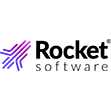

DataStax just announced the general availability of its vector search capability in Astra DB, its DBaaS built on Apache Cassandra.
Vector search is a must-have capability for building generative AI applications. In machine learning, vector embeddings are the distilled representations of raw training data and act as a filter for running new data through during inference. Training a large language model results in potentially billions of vector embeddings.
Vector databases store these embeddings and perform a similarity search to find the best match between a user’s prompt and the vectorized training data. Instead of searching with keywords, embeddings allow users to conduct a search based on context and meaning to extract the most relevant data.
There are native databases specifically built to manage vector embeddings, but many relational and NoSQL databases (like Astra DB) have been modified to include vector capabilities due to the demand surrounding generative AI.
This demand is palpable: McKinsey estimates that generative AI could potentially add between $2.6 and $4.4 trillion in value to the global economy. DataStax CPO Ed Anuff noted in a release that databases capable of supporting vectors are crucial to tapping into the potential of generative AI as a sustainable business initiative.
“An enterprise will need trillions of vectors for generative AI so vector databases must deliver limitless horizontal scale. Astra DB is the only vector database on the market today that can support massive-scale AI projects, with enterprise-grade security, and on any cloud platform. And, it’s built on the open source technology that’s already been proven by AI leaders like Netflix and Uber,” he said.
DataStax says one advantage of vector search within Astra DB is that it can help reduce AI hallucinations. LLMs are prone to fabricating information, called hallucinating, which can be damaging to business. This vector search release includes Retrieval Augmented Generation (RAG), a capability that grounds search results within specific enterprise data so that the source of information can be easily pinpointed.
 Data security is another factor to consider with generative AI deployment, as many AI use cases involve sensitive data. DataStax says Astra DB is PCI, SOC2, and HIPAA enabled so that companies like Skypoint Cloud Inc., which offers a data management platform for the senior living healthcare industry, can use Astra DB as a vector database for resident health data.
Data security is another factor to consider with generative AI deployment, as many AI use cases involve sensitive data. DataStax says Astra DB is PCI, SOC2, and HIPAA enabled so that companies like Skypoint Cloud Inc., which offers a data management platform for the senior living healthcare industry, can use Astra DB as a vector database for resident health data.
“Envision it as a ChatGPT equivalent for senior living enterprise data, maintaining full HIPAA compliance, and significantly improving healthcare for the elderly,” said Skypoint CEO Tisson Mathew in a statement.
To support this release, DataStax also created a Python library called CassIO aimed at accelerating vector search integration. The company says this software framework easily integrates with popular LLM software like LangChain and can maintain chat history, create prompt templates, and cache LLM responses.
The new vector search capability is available on Astra DB for Microsoft Azure, AWS, and Google Cloud. The company also says vector search will be available for customers running DataStax Enterprise, the on-premises, self-managed offering, within the month.
Matt Aslett of Ventana Research expects generative AI adoption to grow rapidly and says that through 2025, one-quarter of organizations will deploy generative AI embedded in one or more software applications.
![]()
“The ability to trust the output of generative AI models will be critical to adoption by enterprises. The addition of vector embeddings and vector search to existing data platforms enables organizations to augment generic models with enterprise information and data, reducing concerns about accuracy and trust,” he said.
Related Items:
Vector Databases Emerge to Fill Critical Role in AI
DataStax Bolsters Real-Time Machine Learning with Kaskada Buy
DataStax Nabs $115 Million to Help Build Real-Time Applications
September 15, 2025
- Penn State Center for Social Data Analytics Now Accepting Grant Applications
- Pacific Wave, Cal Poly Humboldt, and Internet2 Collaborate on Connectivity to Singapore, Guam, and Jakarta
- Governing AI Starts with Giving Users Control Over Their Data
- KX and OneTick Merge to Unite Capital Markets Data, Analytics, AI and Surveillance on One Platform
- Snowflake Ranked by Fortune as #1 on Its Future 50 2025 List
- Exabeam and Cribl Partner to Power Scalable, High-Fidelity Threat Detection with Next-Gen Data Pipelines
September 11, 2025
- MinIO Brings Hyperscaler Economics On-Prem with AIStor Pods
- Honeycomb Introduces the Developer Interface of the Future with AI-Native Observability Suite
- AdaParse: Smart PDF Processing for Scientific AI Training
September 10, 2025
- Progress Software Launches SaaS RAG Platform for Verifiable Generative AI
- Sigma Reveals New AI, BI, and Analytics Features, Redefining Data Exploration Capabilities for Customers
- Couchbase Shareholders Approve Acquisition by Haveli Investments
- Plotly Launches Studio and Cloud with GA as Vibe Analytics Event Approaches
- Expert.ai Launches Enhanced Solutions for Digital Information Services
- ThoughtSpot Redefines Analytics with Boundaryless, Agentic Intelligence
- Perforce Expands AI Capabilities to Boost Speed and Security in Software Development
- DiffusionData Releases Diffusion 6.12
September 9, 2025
- Inside Sibyl, Google’s Massively Parallel Machine Learning Platform
- What Are Reasoning Models and Why You Should Care
- Beyond Words: Battle for Semantic Layer Supremacy Heats Up
- Rethinking Risk: The Role of Selective Retrieval in Data Lake Strategies
- Software-Defined Storage: Your Hidden Superpower for AI, Data Modernization Success
- The AI Beatings Will Continue Until Data Improves
- What Is MosaicML, and Why Is Databricks Buying It For $1.3B?
- Why Metadata Is the New Interface Between IT and AI
- Top-Down or Bottom-Up Data Model Design: Which is Best?
- How to Make Data Work for What’s Next
- More Features…
- Mathematica Helps Crack Zodiac Killer’s Code
- GigaOm Rates the Object Stores
- Solidigm Celebrates World’s Largest SSD with ‘122 Day’
- Promethium Wants to Make Self Service Data Work at AI Scale
- Databricks Now Worth $100B. Will It Reach $1T?
- AI Hype Cycle: Gartner Charts the Rise of Agents, ModelOps, Synthetic Data, and AI Engineering
- The Top Five Data Labeling Firms According to Everest Group
- Data Prep Still Dominates Data Scientists’ Time, Survey Finds
- Career Notes for August 2025
- MIT Report Flags 95% GenAI Failure Rate, But Critics Say It Oversimplifies
- More News In Brief…
- Seagate Unveils IronWolf Pro 24TB Hard Drive for SMBs and Enterprises
- Gartner Predicts 40% of Generative AI Solutions Will Be Multimodal By 2027
- DataSnap Expands with AI-Enabled Embedded Analytics to Accelerate Growth for Modern Businesses
- Acceldata Announces General Availability of Agentic Data Management
- Transcend Expands ‘Do Not Train’ and Deep Deletion to Power Responsible AI at Scale for B2B AI Companies
- Pecan AI Brings Explainable AI Forecasting Directly to Business Teams
- SETI Institute Awards Davie Postdoctoral Fellowship for AI/ML-Driven Exoplanet Discovery
- NVIDIA: Industry Leaders Transform Enterprise Data Centers for the AI Era with RTX PRO Servers
- Hitachi Vantara Recognized by GigaOm, Adds S3 Table Functionality to Virtual Storage Platform One Object
- Ataccama Data Trust Assessment Reveals Data Quality Gaps Blocking AI and Compliance
- More This Just In…






































